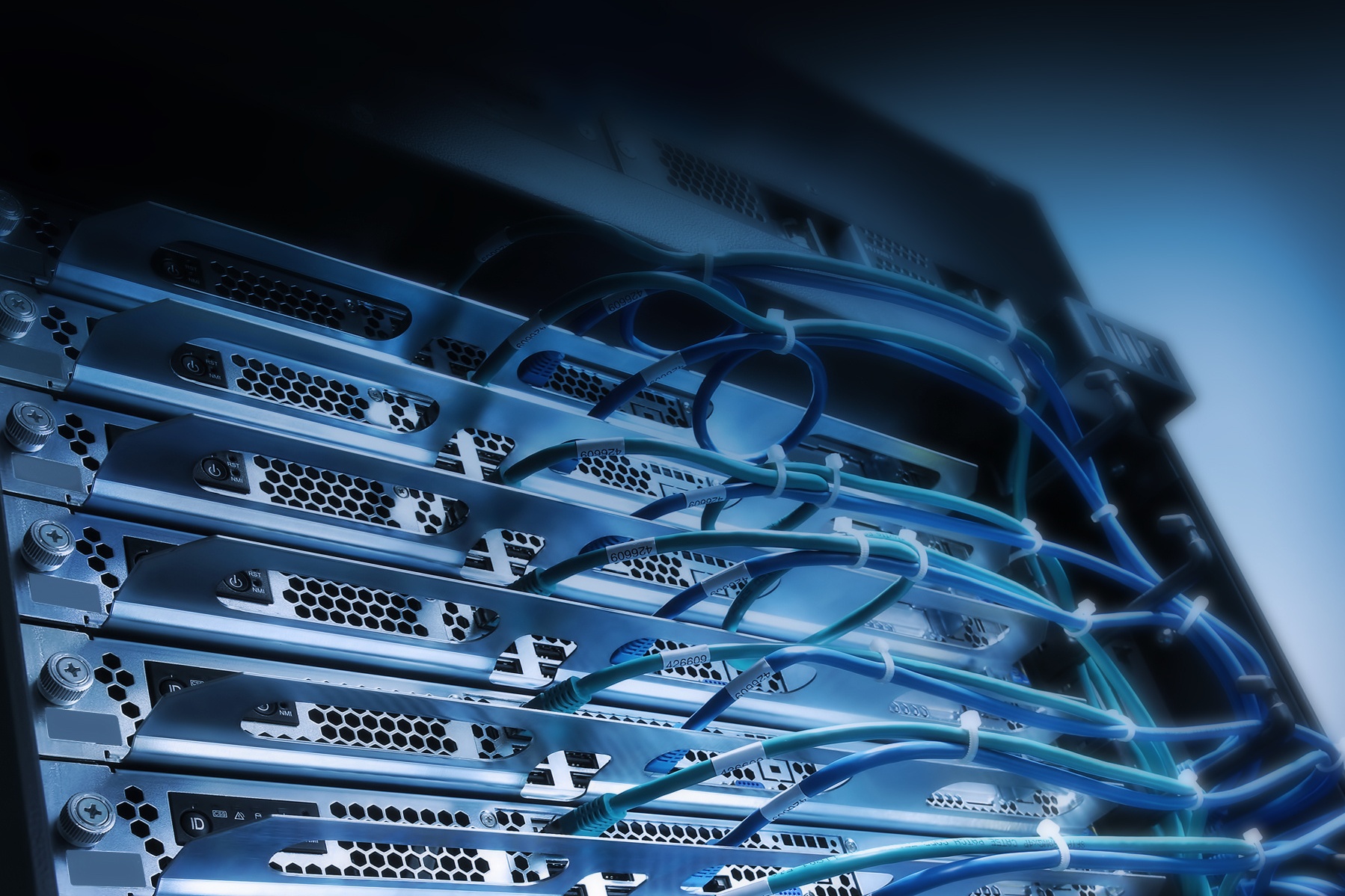The data centre of the future
While cloud computing and big data get all the attention, it’s data centres that make it all possible

Spare a thought for the humble data centre; while flashy technologies like cloud computing, machine learning and big data seem to get all the attention these days, it's data centres that make it all possible, quietly humming away in the background.
Whether you're a consumer or a business, data centres support and enable everything that you do on a moment-to-moment basis, whether it's talking to friends, watching a film or even catching the train. Technology has interwoven itself into every aspect of our daily lives, and none of it would be possible without data centres.
Even in this brave new world where almost every organisation is exploring the potential of the cloud, the data centre is still essential which is demonstrated by the fact that according to research from CBRE, demand for colocation in European data centres has hit all-time highs this year.
After all, all your application workloads, test environments and corporate files need to live somewhere; cloud computing means you don't have to maintain your own data centre, but it doesn't negate the need for one altogether.
In fact, the advent of widespread cloud means that businesses need to be more concerned than ever about the state of the data centre they're using, whether it's theirs or their cloud provider's. Organisations using their own on-premise infrastructure need to ensure that their hardware is capable of keeping up with their cloud-hosted competitors, while those in the cloud should be using the increased freedom that that entails to demand the very best from their cloud partners.
You see, not all data centres are created equal. As any IT veteran knows, it's not about how many racks you have, but what's inside them and it comes down to much more than core counts and clock speeds. Faster components and higher capacities are all well and good, to be sure, but the real heart of data centre transformation is ensuring that all the constituent elements of your data centre are working together in harmony.
The pace of modern business is increasing by the day, and in a mobile-focused, software-driven economy, split-second advantages can mean the difference between failure and success. To keep up with this rapid pace of change, organisations are increasingly turning to the powerful combination of data analytics and machine learning; using advanced AI to rapidly sort through the vast corpuses of information they generate on a daily basis and generate actionable business insights.
This strategy can be a real game-changer for business agility, but the downside is that it can put a huge strain on an under-equipped data centre. Analytics workloads rely on the speed at which the system can query a dataset; the faster a query can be returned, the more insights can be delivered within a given timeframe.
Where this typically hits a bottleneck in conventional data centres is the link between storage and compute. Regardless of how fast your processor is, older storage technologies take too long to move the data from storage to memory where it can be analysed, so faster processors are left underutilised because the storage can't perform enough IOPS to keep up.
Data-driven analytics isn't the only way that our use of data centres is evolving, though. One of the more interesting recent developments in enterprise IT has been the concept of edge computing' the concept of de-centralised data centres. In essence, this involves moving computational power away from the bulk of your IT system and putting it at the edge of your network, closer to where your data is collected.
This allows organisations to reduce the amount of time and bandwidth they spend on moving data between their data centre and their endpoints. It's commonly used in remote locations like oil rigs, for example, where internet connections can be expensive and difficult to maintain. In order to facilitate this, companies are effectively having to deploy miniature data centres, with portions of storage, compute and networking all packed into a single, hard-wearing package for deployment in hostile environments.
"With the recent increase in business-driven IT initiatives, often outside of the traditional IT budget, there has been a rapid growth in implementations of IoT solutions, edge compute environments and nontraditional' IT," explained Gartner research vice president David Cappuccio in a recent blog post.
"There has also been an increased focus on customer experience with outward-facing applications, and on the direct impact of poor customer experience on corporate reputation. This outward focus is causing many organisations to rethink placement of certain applications based on network latency, customer population clusters and geopolitical limitations (for example, the EU's GDPR or regulatory restrictions)."
As organisations adapt to the new landscape, these new use-cases are also changing the way that data centre hardware is being built. Intel's newest family of Xeon Scalable processors, for instance, has been built to enable these kinds of high-intensity workloads, featuring a new Mesh-based architecture which improves on the previous ring model by allowing more efficient multi-tasking and greater scalability, as well as providing an overall performance boost.
Where things really start to get interesting, however, is when you combine Xeon Scalable processors with Intel's Optane memory. Its flash-based architecture means incredibly low-latency, allowing it to perform much more queries per second than traditional drives. Optane DC Persistent Memory modules also offer DRAM-level speeds, meaning that data analytics workloads can be performed in-memory. Because information doesn't have to be shuttled back and forth between memory and storage, results can be delivered with much greater speeds.
Intel's Optane and Xeon Scalable technologies are engineered to work in concert with each other, eliminating bottlenecks and maximising the time-to-value from your data centre. Both have been designed with next-generation use-cases like machine learning, data analytics and IoT in mind, allowing your business to scale effortlessly without worrying about ageing infrastructure.
So what does the future of the data centre really look like? Despite the growing appeal of cloud computing, the data centre itself isn't going away any time soon. In fact, it's evolving, becoming more powerful and versatile than ever, as organisations demand the ability to run real-time analytics workloads and advanced machine learning algorithms. In the modern age, the cloud may be king - but the data centre is most definitely the power behind the throne.
Get the ITPro daily newsletter
Sign up today and you will receive a free copy of our Future Focus 2025 report - the leading guidance on AI, cybersecurity and other IT challenges as per 700+ senior executives
Adam Shepherd has been a technology journalist since 2015, covering everything from cloud storage and security, to smartphones and servers. Over the course of his career, he’s seen the spread of 5G, the growing ubiquity of wireless devices, and the start of the connected revolution. He’s also been to more trade shows and technology conferences than he cares to count.
Adam is an avid follower of the latest hardware innovations, and he is never happier than when tinkering with complex network configurations, or exploring a new Linux distro. He was also previously a co-host on the ITPro Podcast, where he was often found ranting about his love of strange gadgets, his disdain for Windows Mobile, and everything in between.
You can find Adam tweeting about enterprise technology (or more often bad jokes) @AdamShepherUK.
-
 Bigger salaries, more burnout: Is the CISO role in crisis?
Bigger salaries, more burnout: Is the CISO role in crisis?In-depth CISOs are more stressed than ever before – but why is this and what can be done?
By Kate O'Flaherty Published
-
 Cheap cyber crime kits can be bought on the dark web for less than $25
Cheap cyber crime kits can be bought on the dark web for less than $25News Research from NordVPN shows phishing kits are now widely available on the dark web and via messaging apps like Telegram, and are often selling for less than $25.
By Emma Woollacott Published
-
 Raising the bar on enterprise computing
Raising the bar on enterprise computingSponsored More than just a new CPU generation, 2nd Gen Intel® Xeon® Scalable processors could be revolutionary for enterprise computing
By IT Pro Published
-
 The evolution of the data centre
The evolution of the data centreSponsored Data centres have become the glue that holds the fabric of modern society together
By IT Pro Published
-
 Intel Xeon Scalable and Optane: Transforming the data centre
Intel Xeon Scalable and Optane: Transforming the data centreSponsored This high-speed combo isn’t just boosting performance, but changing the IT services that enterprises can deliver
By ITPro Published
-
 Fintech and the data centre
Fintech and the data centreSponsored How data centre revitalisation can bolster your bottom-line
By ITPro Published
-
 Intel Optane: The future of data centre storage
Intel Optane: The future of data centre storageSponsored Optane could be a revolutionary technology for the data centre, improving performance while bringing high-end applications down in cost
By ITPro Published
-
 Intel Xeon Scalable – for the next-generation data centre
Intel Xeon Scalable – for the next-generation data centreSponsored Major architectural changes make this the Xeon tomorrow’s data centre needs
By ITPro Published
